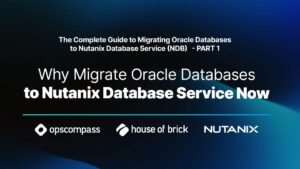Mike Stone (@HoBMStone), CIO & Principal Architect
It’s been 14 years since I first presented on this topic of IPv6. (Can you say Y2K?) The Internet was still in its very early days and the concept of blogging hadn’t even been invented yet. Now we are racing down the information super-highway at ever-increasing speeds. Since the year 2000, the number of globally connected devices has increased by at least 12 fold according to conservative estimates – practically doubling every year. It’s interesting to see how that lines up with the predictions from 14 years ago.
There were dire predictions of catastrophe if we continued at that pace with only IPv4 as our primary communication transport. Indeed without IPv6 we wouldn’t have made it here. Yet here we are, and I am absolutely amazed that people still barely understand what IPv6 is all about.
Today all hardware vendors support the protocol and most network gear produced in the last decade has hardware support built in. Many people are running it on their internal networks without even being aware of its existence or its significance.
The Internet backbone is built on IPv6 and would not function today without it. But like most other ubiquitous technology, the masses are blissfully unaware of the details that support this convenience of modern life. And did not even notice the change over from IPv4.
So why do we care? Well, if you’re a geek like me, and you’re curious about such things, read on for a quick primer.
For more of the gory details, read the Wiki. Or, if you’re an uber-geek, you can just read the RFC for yourself.
Summary of the points I initially presented in 2000
Terminology
DNS returns an “A” record for IPv4 and returns a “Quad-A” (AAAA) record for IPv6. The main difference being the size (number of bits) in the address returned to the inquirer.
IPv4 addresses consist of four 8-bit “octets” where each one is in the range 1 to 255 and typically expressed in decimal notation. Some ranges are reserved for special use as well as private “sub-networks” or subnets. Addresses are typically represented in the “quad-dot” format, aaa.bbb.ccc.ddd, and have 32-bits to uniquely identify a device within a network. The use of routed subnets is the only reason IPv4 still exists today, because without the reusability of non-routable subnets, we would have run out of address space long ago.
Now, IPv6 addresses consist of eight 16-bit groups of hexadecimal numbers separated by colons, increasing the address space to 128 bits! Needless to say a form of shorthand would be handy, and the simplest is to just remove the leading 0’s in each group. For example, the IPv6 address 1050:0000:0000:0000:0005:0600:300c:326b may be written as 1050:0:0:0:5:600:300c:326b.
Major Enhancements Over Former Protocols
- 128 bit addressing
- Nearly impossible to exhaust address space
- Streamlined routing
- No “hop” checksum calculations (packet content doesn’t change just because it passed through another piece of networking equipment)
- Faster routing on all hardware
- Network neighborhood concept
- Neighbor advertisement and discovery
- Router advertisement and discovery
- Similar to Microsoft Networking
- Optimized handling of standard IP features
Transition to IPv6
Then (2000)
- Had largely been implemented as the backbone of the Internet in silence
- Few customers were actually taking advantage of it
- Still shrouded in mystery
Now (2014)
- Has been fully implemented as the backbone of the Internet
- Few customers actively taking advantage of it
- Still largely shrouded in mystery
Why was it Necessary?
Then (2000)
- Forecasted internet growth
- Connected networks doubling every 12 months
- Road warriors
- Web TV
- Household devices
- 100 Million hosts on-line now
- 40 Million unique visitors per day
- Much of the infrastructure already in place
- Supported by DNS for two years
- Major hardware vendors supply drivers
- Many software vendors still choke on it (Oracle…)
- Bone already exists in academia
- Compatibility was a major goal
- Any combination of client and server
- Encapsulation works both ways
- Automatic tunneling
Now (2014)
- Internet growth fairly closely matched expectations. Considering wireless, it has vastly exceeded it. But wireless networks masked some of the urgency for adopting a new transport, in much the same way non-routable subnets did.
- The infrastructure is complete and academia is already into the next big thing
- Supported by all hardware vendors and most software vendors
- All major goals accomplished
Conclusion (updated for 2014)
- Major overhaul with backward compatibility (accomplished)
- Supported by all vendors (accomplished)
- Enabled the Internet to grow beyond major IP restrictions and paved the way for a truly global community.






